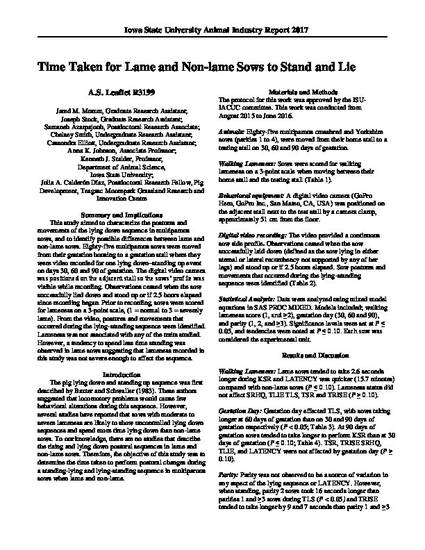
This study aimed to characterize the postures and movements of the lying down sequence in multiparous sows,and to identify possible differences between lame and non-lamesows. Eighty-five multiparous sows were moved from their gestation housingto a gestation stall where they were video recorded for one lying down–standing up event on days 30, 60 and 90 of gestation. The digital video camera was positioned on the adjacent stall so the sows’ profile was visible while recording. Observations ceasedwhen the sow successfully lied down and stood up or if 2.5 hours elapsed since recording began. Prior to recording, sows were scored for lameness on a 3-point scale, (1 = normal to 3 =severely lame).From thevideo,postures and movements that occurred during the lying-standing sequence were identified. Lameness was not associated with any of the traits studied. However, a tendency to spend less time standing was observed in lame sows suggesting that lameness recorded in thisstudy was notsevere enough to affect the sequence.
Available at: http://works.bepress.com/kenneth_stalder/119/
